Luxor – The Quintessential Ancient Egyptian City
This is the first of several posts on the many world class ancient sites that make the city of Luxor a focal point of any trip to Egypt. While undoubtedly the pyramids and sphinx are at the top of most tourist’s Egyptian bucket list, the Temple of Karnak, the Valley of the Kings, the Valley of the Queens, the Temple of Hatshepsut, the Colossi of Memnon and the Temple of Luxor are not far behind. Please join me in exploring these and other lesser known wonders of the ancient world that are all in or close to the city of Luxor.
Alison and I arrived in Luxor after a three day Nile River cruise on the Radamis II departing from Aswan. You can read my two posts on this exciting journey here and here. We and fifteen other intrepid explorers were on a trip sponsored by Canadian travel company Adventures Abroad, with whom we have traveled many times. I use the word intrepid not because of any danger a trip to Egypt might pose, but more because of a false perception that most westerners have that it is in fact dangerous to go there. I hope in this and my other posts on Egypt to help in some small way to dispel that notion and convince people not to bypass one of the most fascinating and historically important places on earth.
After disembarking from the Radamis II we were transported a short distance along the corniche that runs parallel to the Nile to our hotel, passing the semi-submerged wreck of the Emely along the way.

Our home for the next three nights was the Sonesta St. George Hotel which overlooks the Nile, although the room we were assigned did not have a Nile view. Still the St. George is a more than adequate hotel with decent food, a pool and its own landing area which we used more than a few times over the next two days.
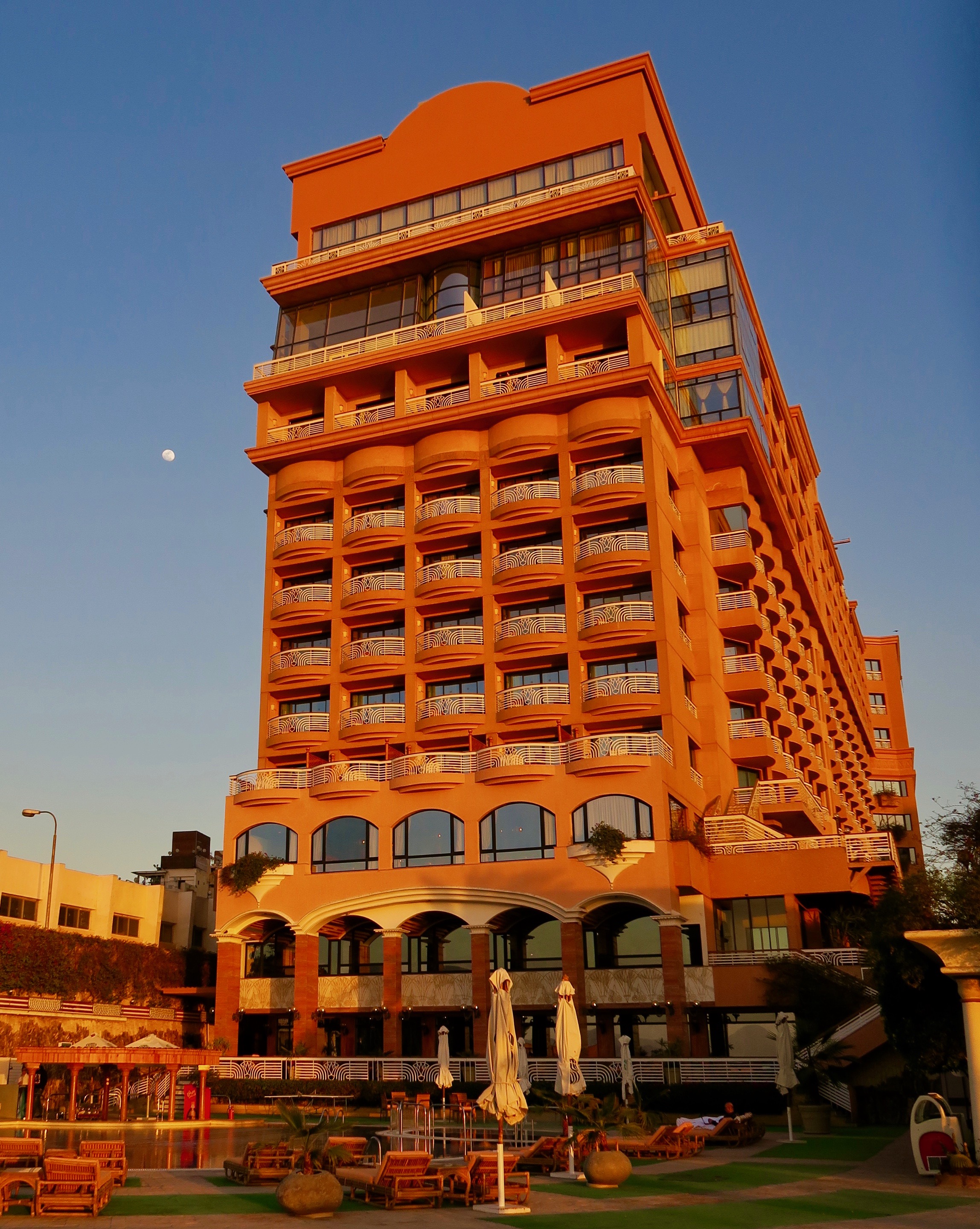
Most scholars of Egyptian history will be familiar with the name Thebes, but not necessarily Luxor. Long before the name Luxor came into common use, well after Roman times, the city that was the capital of ancient Egypt for much of its most glorious dynastic period was known as Thebes, a Greek name shared with one of the most prominent cities of ancient Greece. To the Egyptians who made this the wealthiest city in Egypt and a place of pilgrimage to the great temples erected here, it was called Waset. The name Luxor, which definitely has a nice ring to it, is apparently a corruption of an Arabic word meaning ‘fortress’. Whatever you call it, the UNESCO World Heritage Site that comprises the temples of Luxor and Karnak as well as numerous sites on the West Bank of the Nile, has often been referred to as the world’s greatest open air museum.
The modern city of Luxor which surrounds the ancient sites has just over 450,000 inhabitants and along with Aswan, was a breath of fresh air after Cairo, Giza and even Alexandria. It has a great location alongside the Nile and there is a corniche that makes for a great area to stroll the river banks and watch the feluccas and motor craft that ply the waters under almost perpetual sunny skies. Although you will be petitioned by one caleche driver after enough during these strolls, they are not overly aggressive and don’t detract from the overall enjoyment of this fine city. We found the city quite safe to walk in as the traffic along the corniche is reasonably sane by Egyptian standards and the Luxorites actually do stop for red lights and pedestrians.
Luxor also has a souk, an Egyptian market or bazaar, that is interesting to visit and manageable in size compared to the larger centres. If you get tired of the vendors pleading with you to buy something, anything, you can always just take a seat at one of the many cafes and enjoy a cup of strong Egyptian coffee or perhaps mint tea.
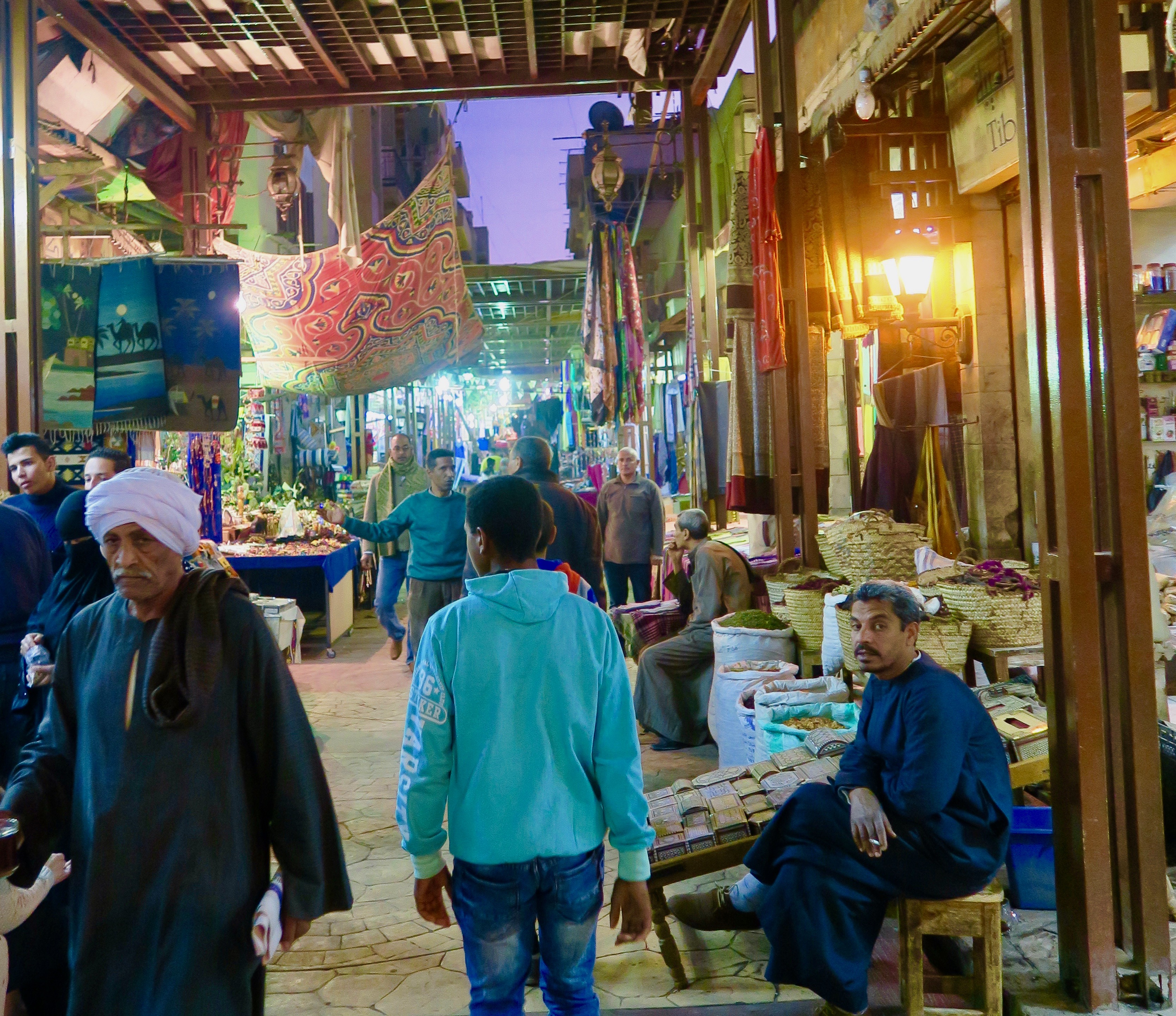
A number of people on the trip had been asking about reputable places to buy Egyptian jewelry and in particular modern cartouches. These are oval shaped pendants upon which a person’s name can be written in hieroglyphs and are considered good luck charms by many. Here’s an example.
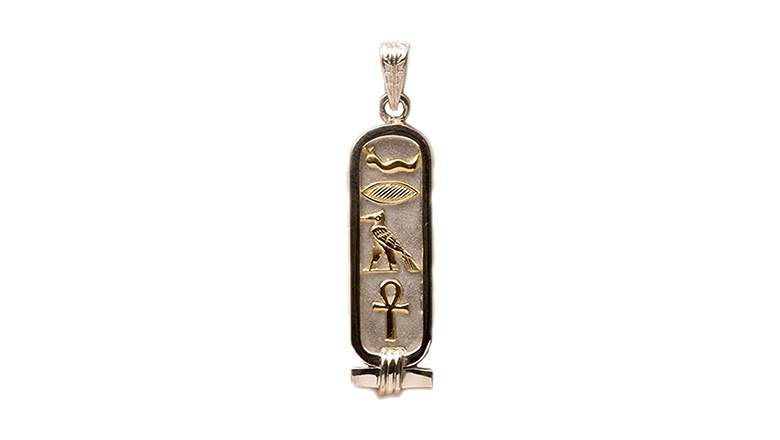
Our inestimable Egyptian guide Ahmed Mohsin Hashem had advised people to wait until we got to Luxor where he said there were many fine craftsmen who specialized in making cartouches. Several members of our group took him up on this and ordered cartouches which Ahmed then picked up the next day. All were pleased with the quality of what they received and the price that Ahmed had helped them to negotiate. Frankly, I regret that we didn’t take him up on his offer. While I don’t personally wear jewelry I know my youngest son who shares the same name as me, would have been delighted to get a cartouche with his name on it in hieroglyphs.
The Temple of Luxor
Luxor has two of the arguably most important and impressive temples in all of the ancient world – the Temple of Luxor and Karnak, both of which I’d first read about over fifty years before when I decided by age ten that I wanted to be an archaeologist. That didn’t happen, but my desire to visit these shrines of antiquity did not diminish. Writing this now, home in Canada, I look back on the visit to the Temple of Luxor as one of the absolute highlights of a trip that had almost too many to count. I know exactly the reason the Temple of Luxor was so outstanding – we visited it at night when it was backlit in a manner that made the place seemingly magical.
The Temple of Luxor was built and added onto over a period of three hundred years between 1500 and 1200 B.C. with Amenhotep III and the long reigned egomaniac Ramses II as the principal builders. There was also a little help from Tutankhamun – the only place where you will find anything attributed to this boy king who is much more famous for being dead than alive. The tinkering even lasted up to the time of another great egomaniac, Alexander the Great. The temple was dedicated to the ka of the Egyptian kings, a concept difficult to define in modern terms, but perhaps closest to our concept of a soul that lives outside the body and survives death. It was also the site of the annual Opet Festival wherein the god Amun along with his wife Mut and son Khons would make the journey from their home in the great temple of Karnak three kilometres away to the Temple of Luxor. Of course, the procession was ritualistic only with priests carrying statues of the gods from one temple to the other, but it is was the direct forerunner of similar rituals today in almost all religions where statues of gods, saints and holy men are carried through throngs of believers on certain pre-ordained festival days.
At one time there was a sacred way running directly between the two great temples lined with sphinxes the entire way. Much of it still remains today and the Egyptian government has plans to restore the entirety of the route over time. Ironically one of the biggest obstacles is a Coptic church which sits smack dab in the middle of the route and for which the Christians have showed very little appetite for relocating so that this ‘pagan’ roadway can be revived. Luxor has a large Christian community and despite what you might think, they do have rights and privileges that are respected by the Muslim majority.
The bus pulls up to the large parking lot which is mostly empty and we get out at the sphinx-lined entry way. I cannot describe the power of the imagery of the those sphinxes or the entrance pylons with the huge statues of Ramses II flanking the entryway. I’m going to let my camera do the talking and just say this – the Temple of Luxor at night is one of the most beautiful, mysterious and enchanting places I’ve ever seen.
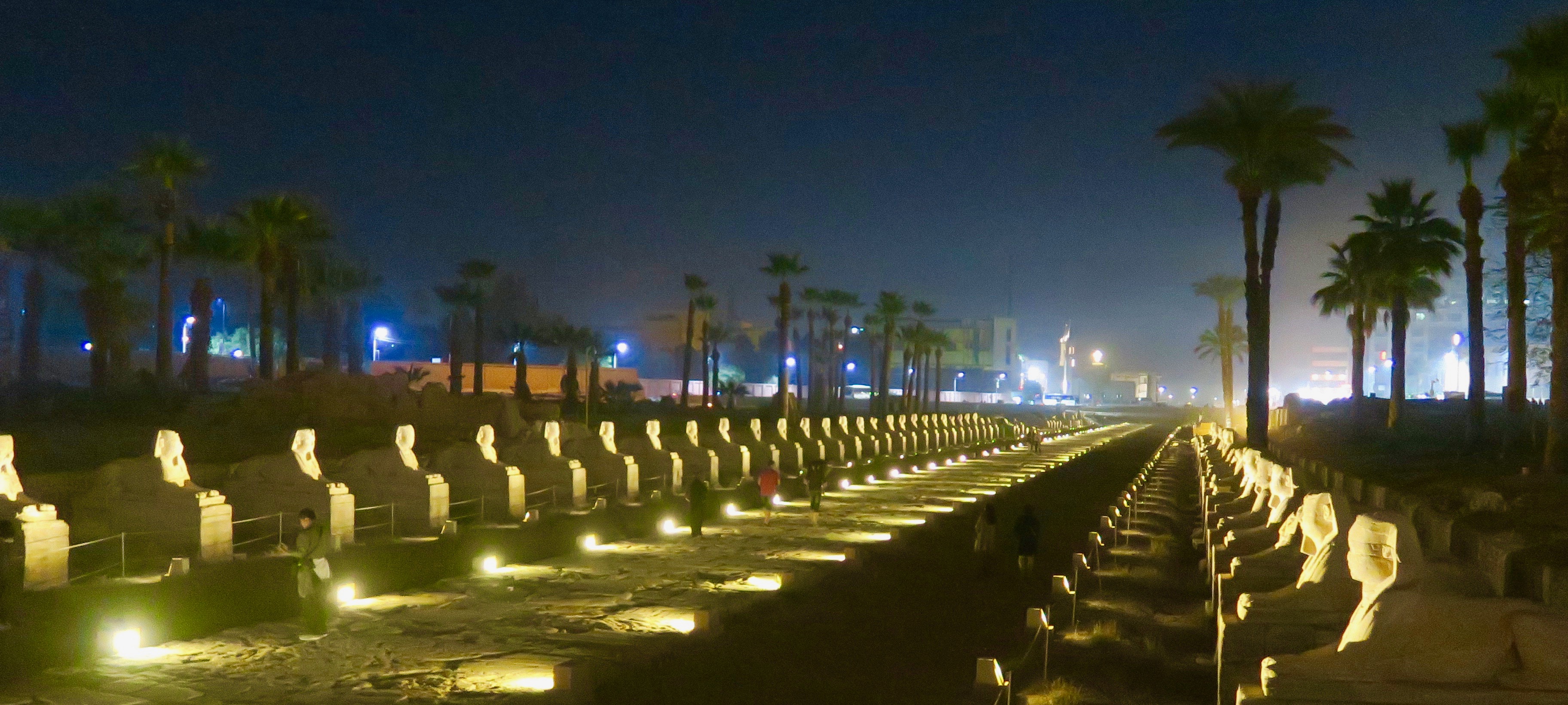
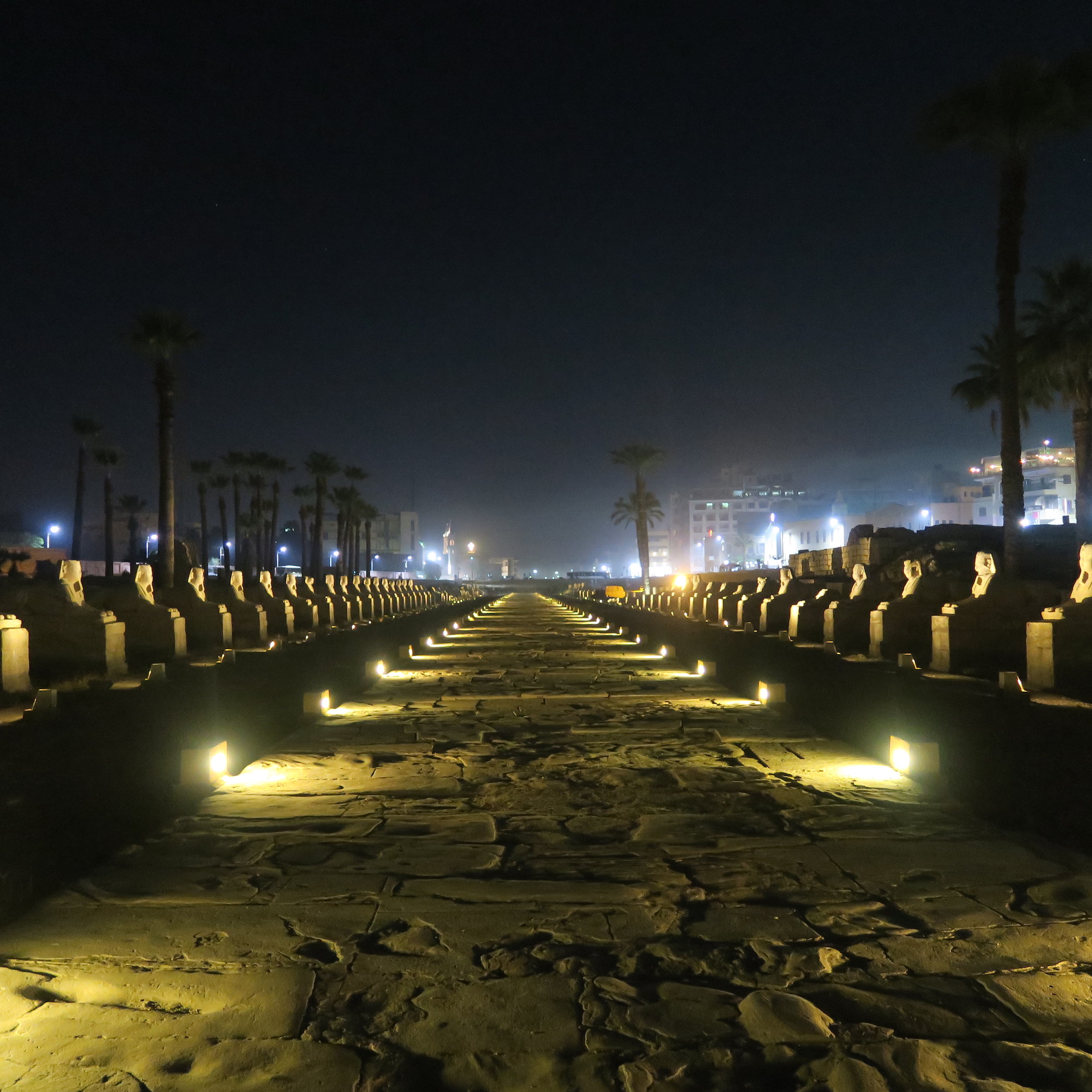
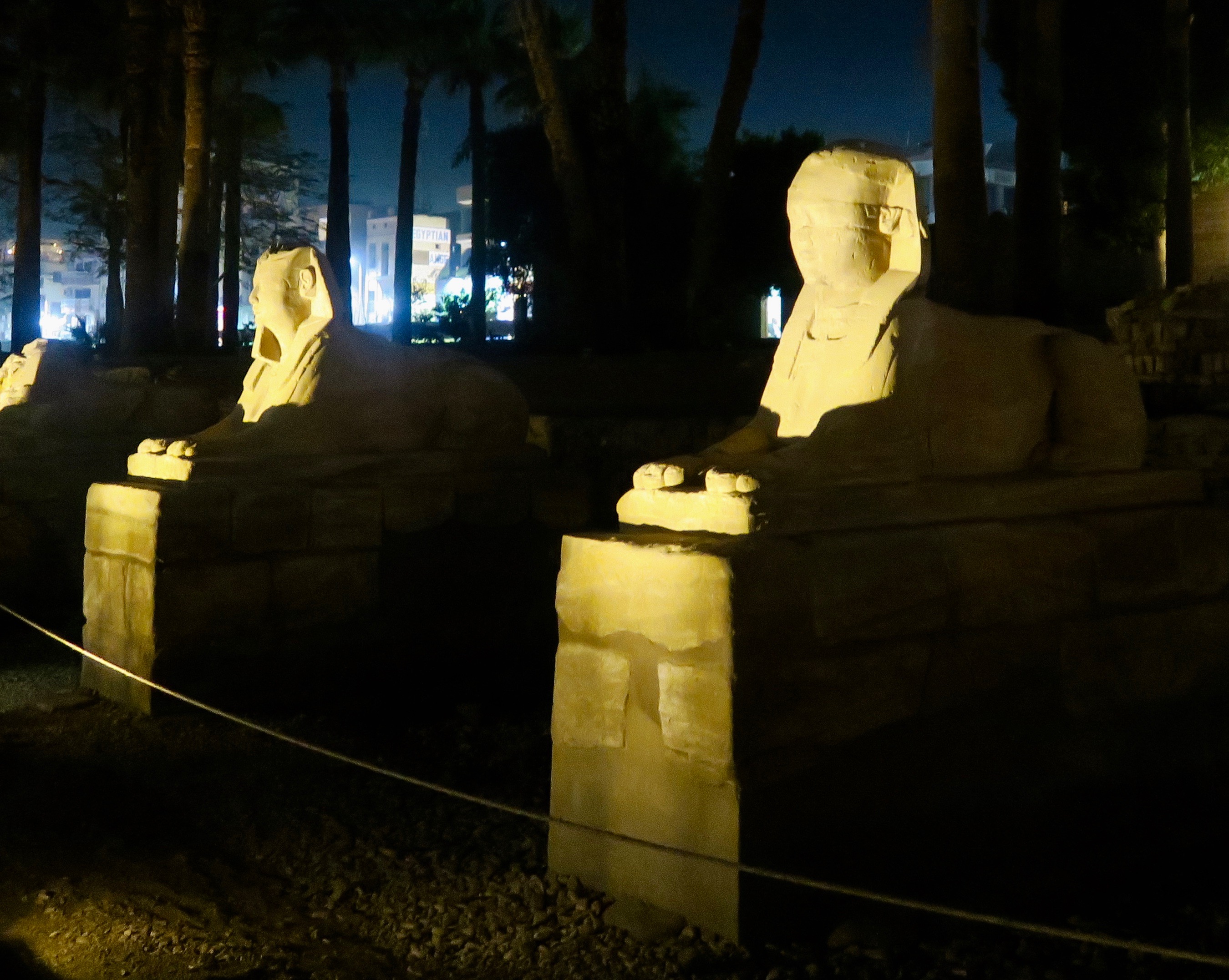
The sphinx road ends at the entrance to the Temple of Luxor. Despite the fact that there was restoration work taking place on the right pylon it detracted very little from the sheer power of the overall scene.
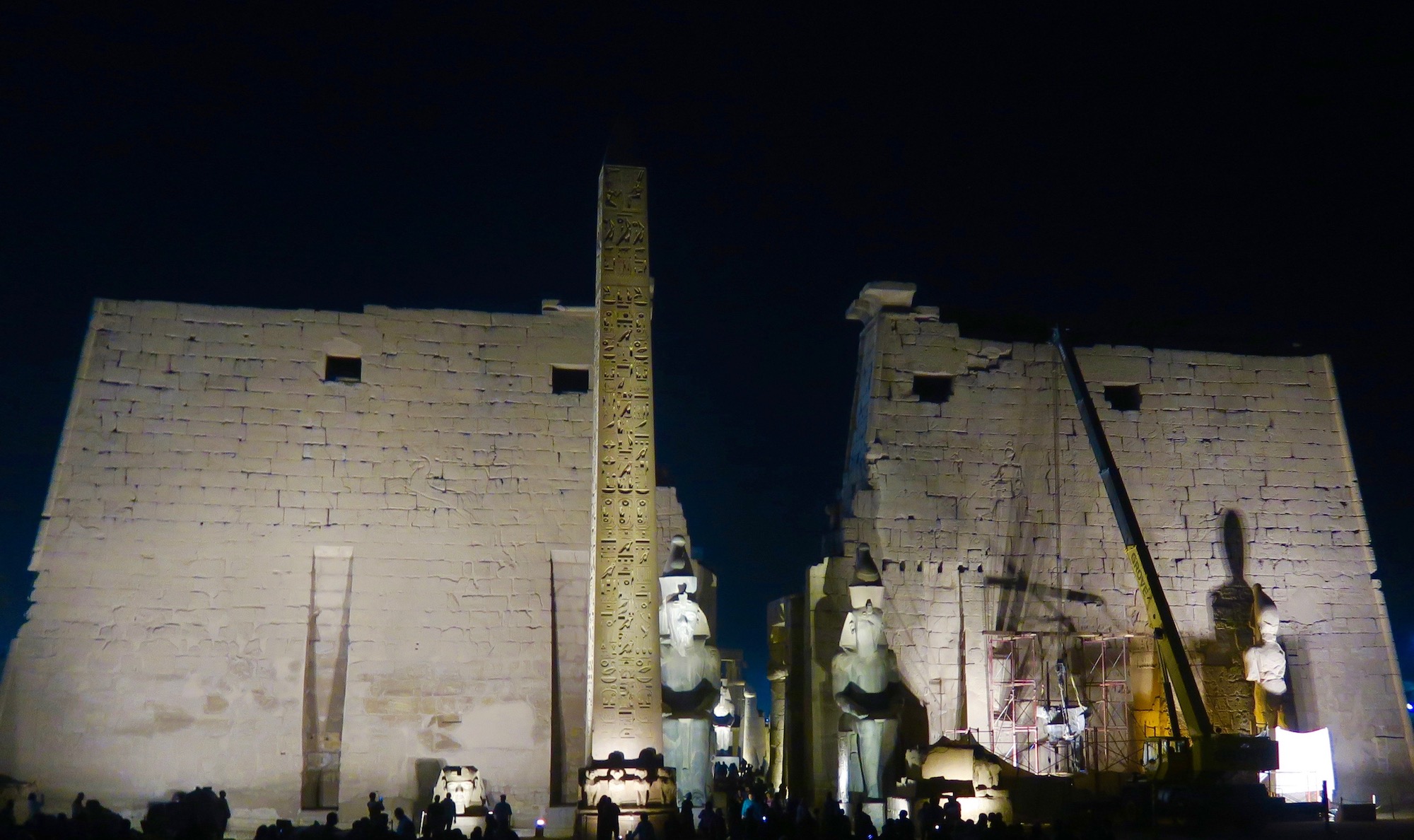
Luxor was the city with the most obelisks in Egypt and the source of many of the ones removed to places around the world. At one time there were two obelisks at the entrance to the Temple of Luxor, but Napoleon decided Paris needed an obelisk more than Luxor and you can now see the second one at the Place de la Concorde.

Ahmed gives us a rundown on the history of the temple and then we are left to explore on our own for over an hour and what an hour it was. I think these may be the best photographs I took on the entire trip, except for this one. Notice the mysterious shadow on Ramses’ hands that makes it appear as if he is holding something. I didn’t notice this until I printed off the picture.
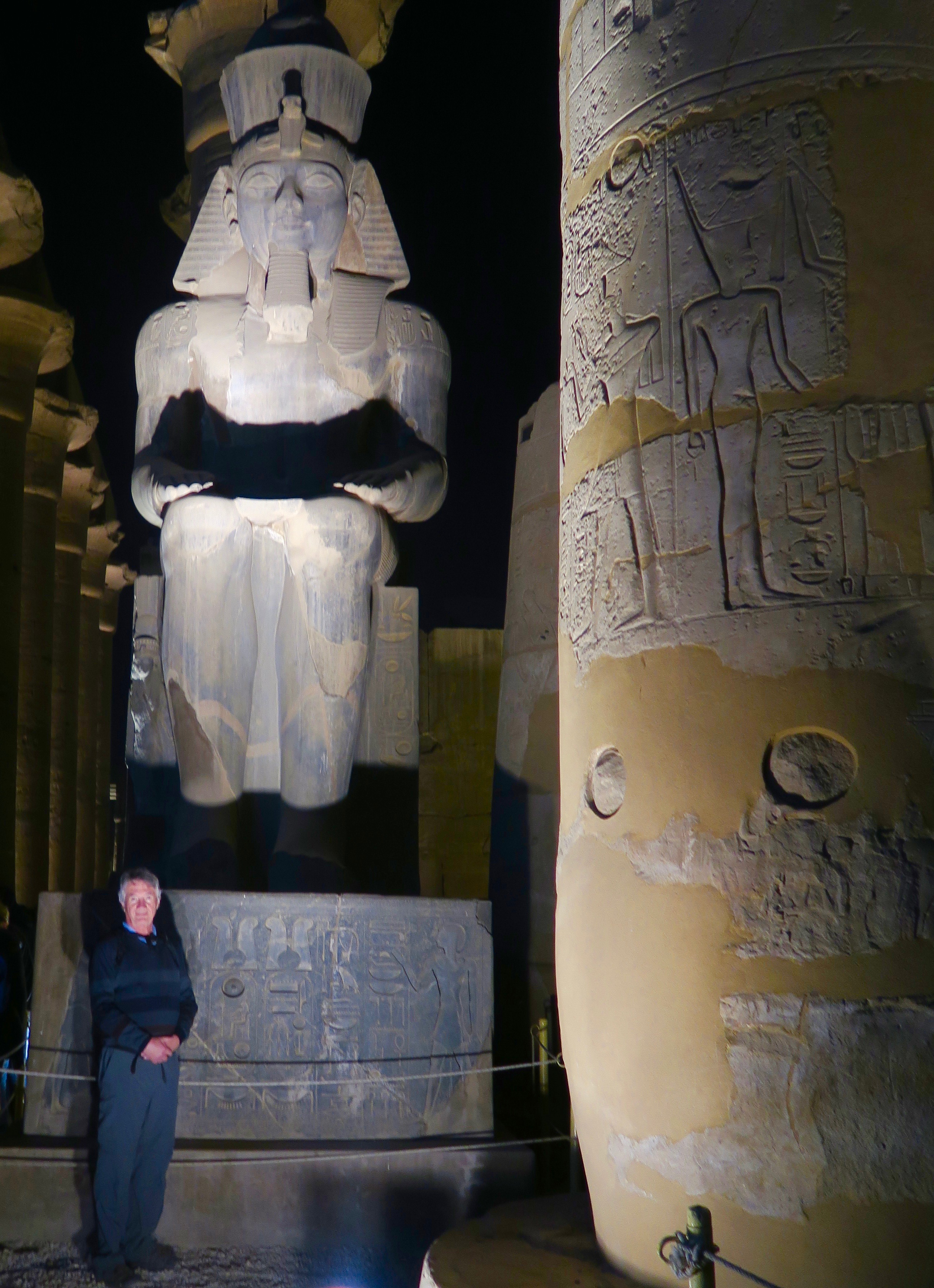
The columns and pillars of Luxor temple are among the largest and most magisterial in the world – a photographer’s dream.
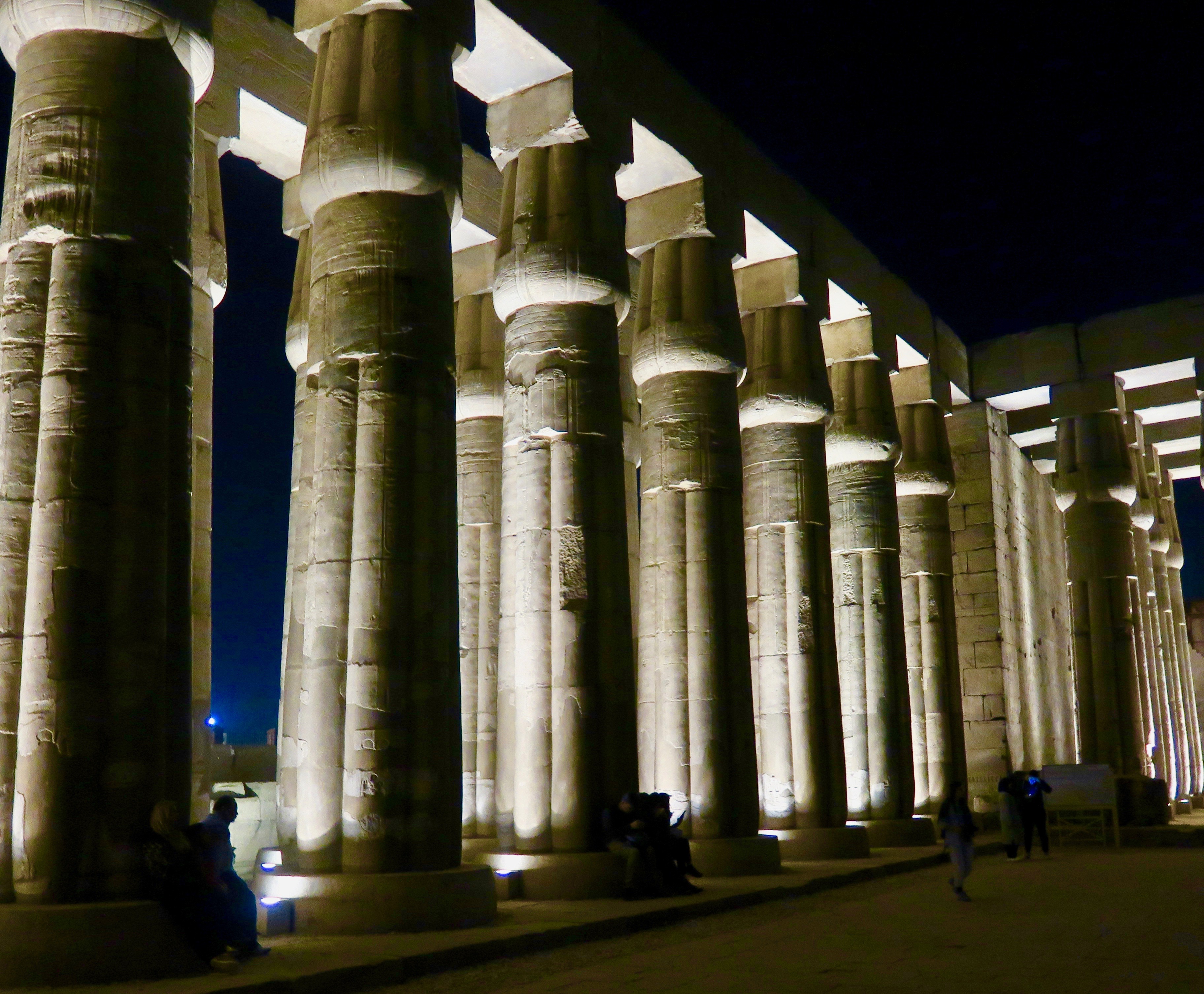
Notice my favourite hieroglyph, the bee, high on the right hand column.
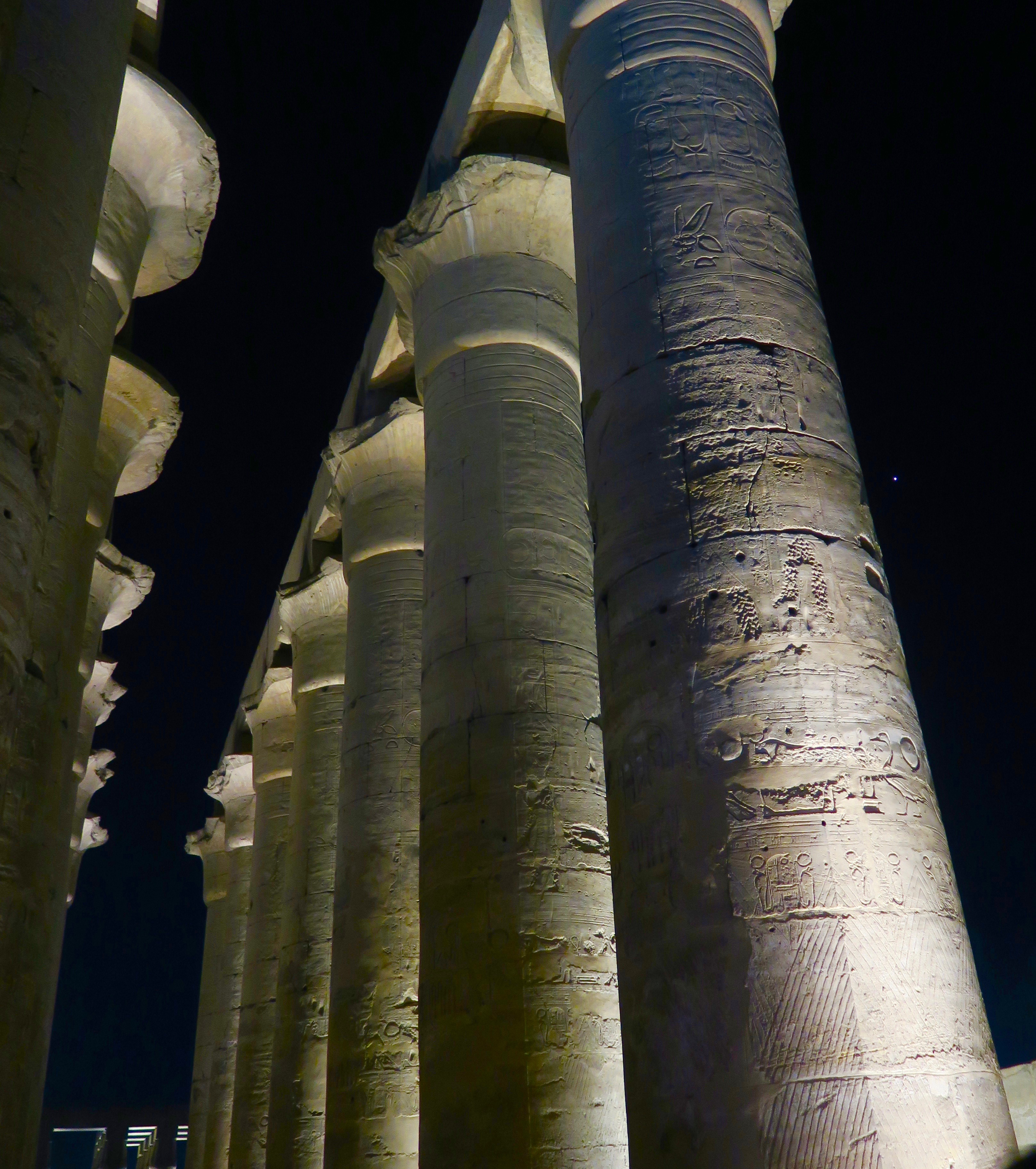
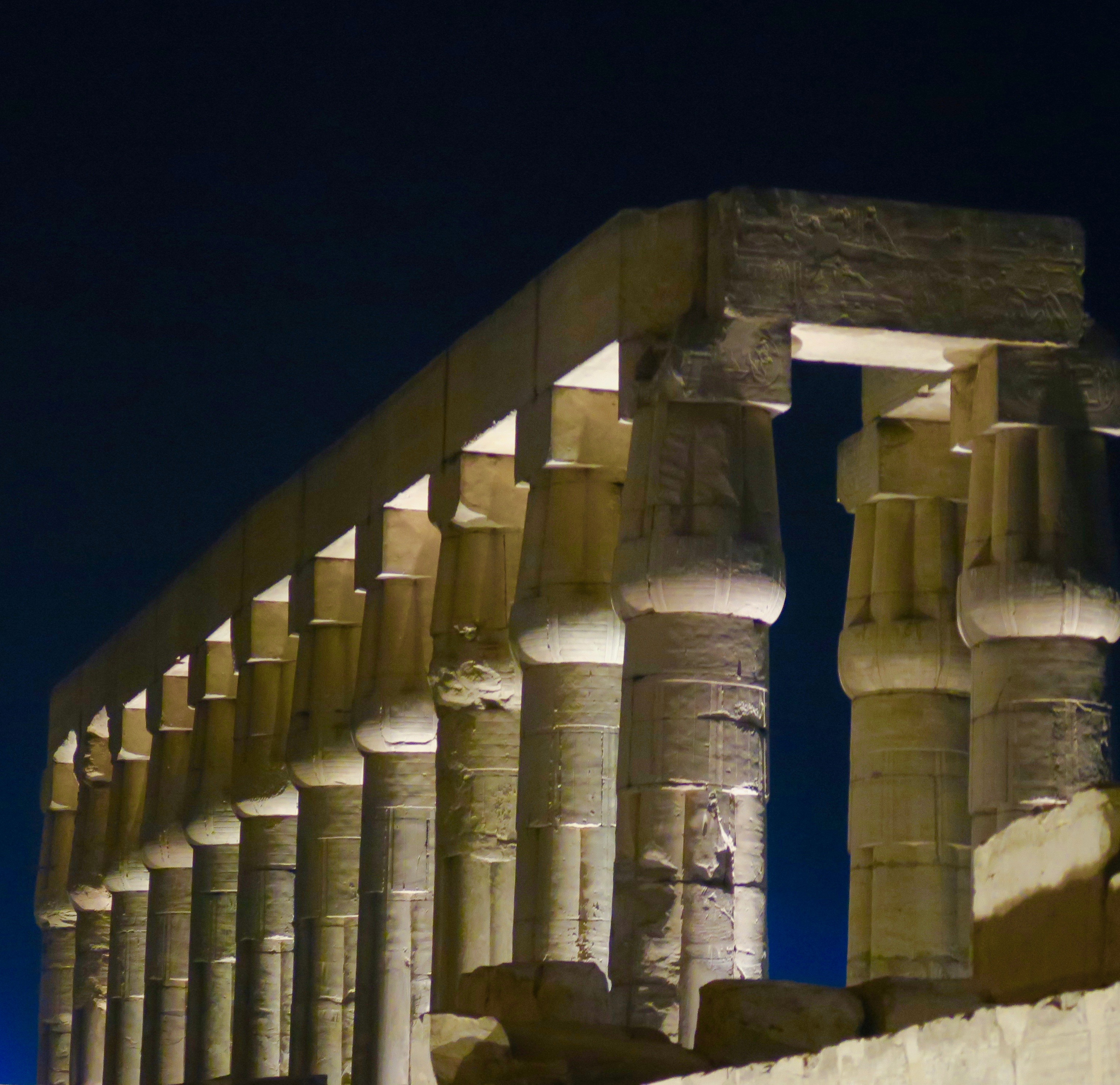
Looks like the religious vandals have been to work on the Ramses statues. Sorry zealots, but you cannot ruin the majesty of this place with a few hammers and chisels.
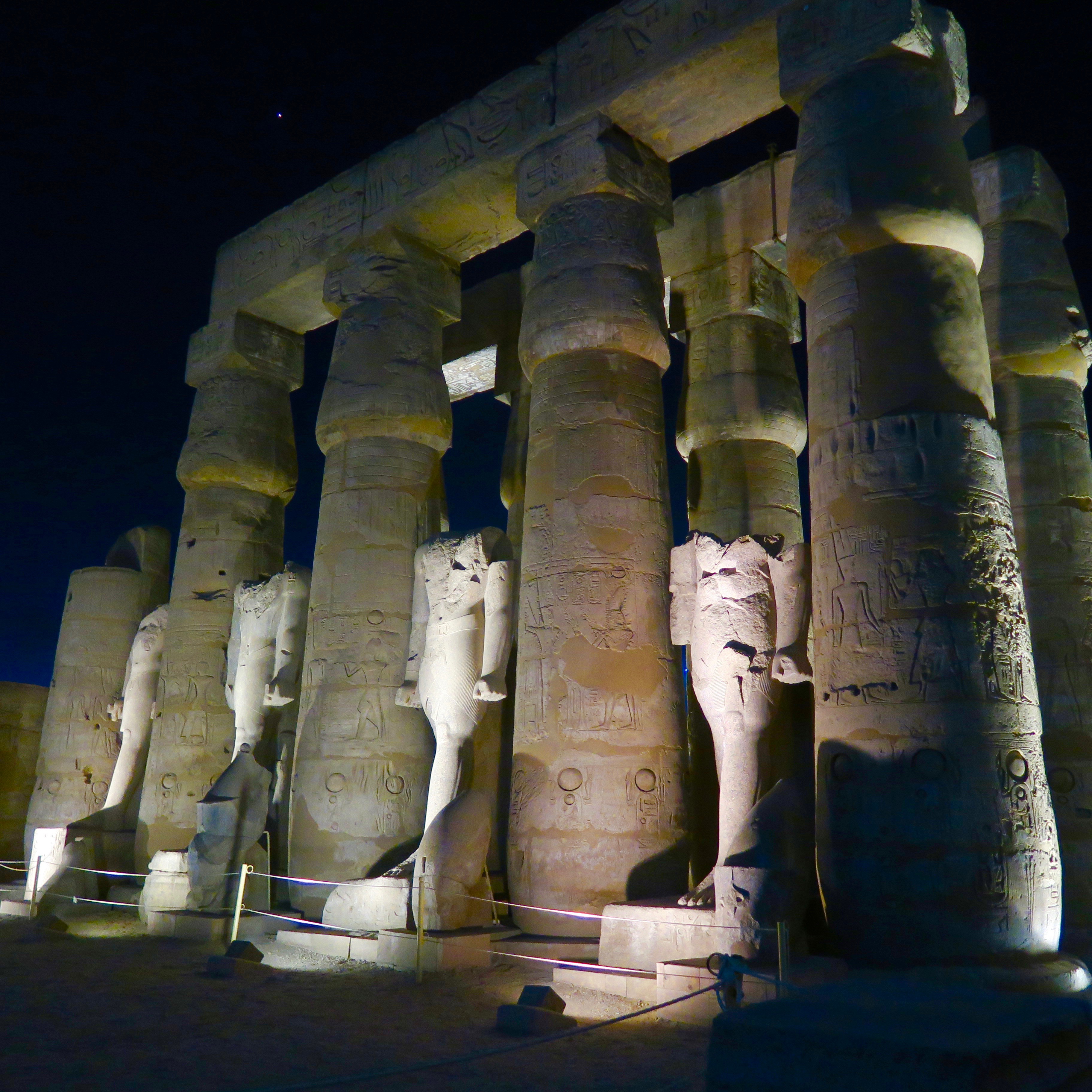
The pillars look great in black and white as well as colour.
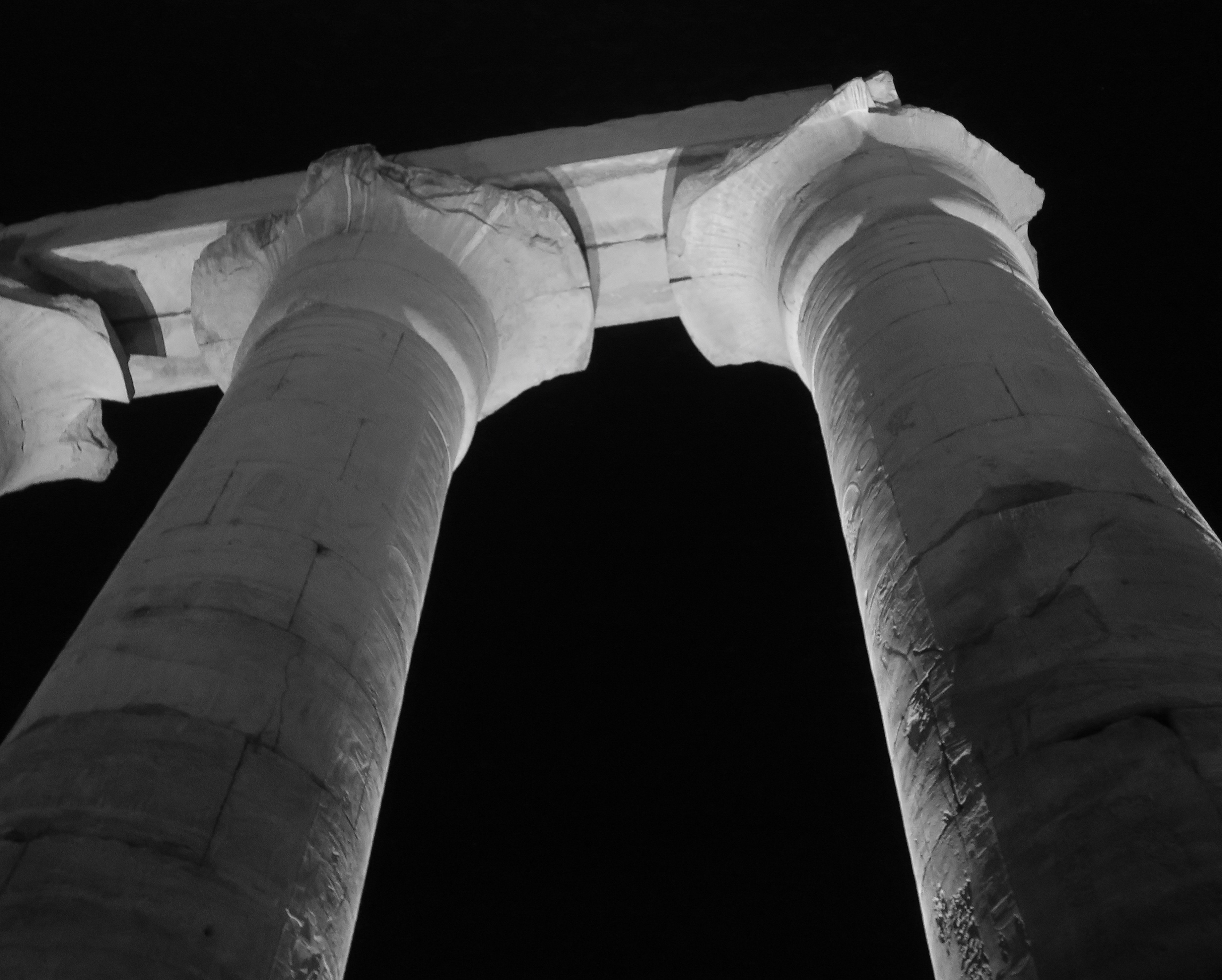
This is Ramses II with his favourite consort Nefertari.
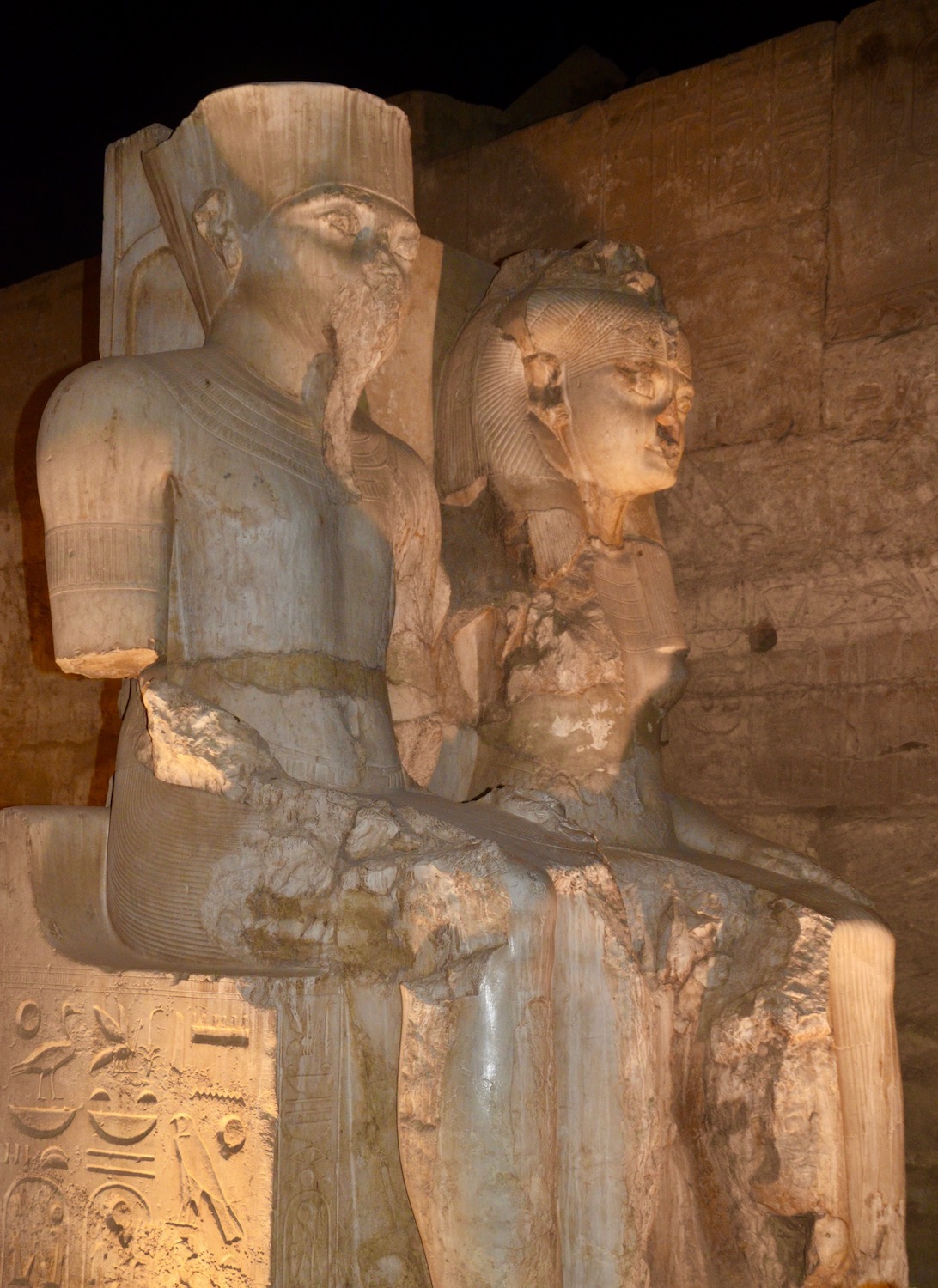
Luxor Temple has some excellently preserved hieroglyphs and carvings of which this is but one example. You could spend hours just looking at the details of these symbols, entranced by the ancient messages they were intended to convey.
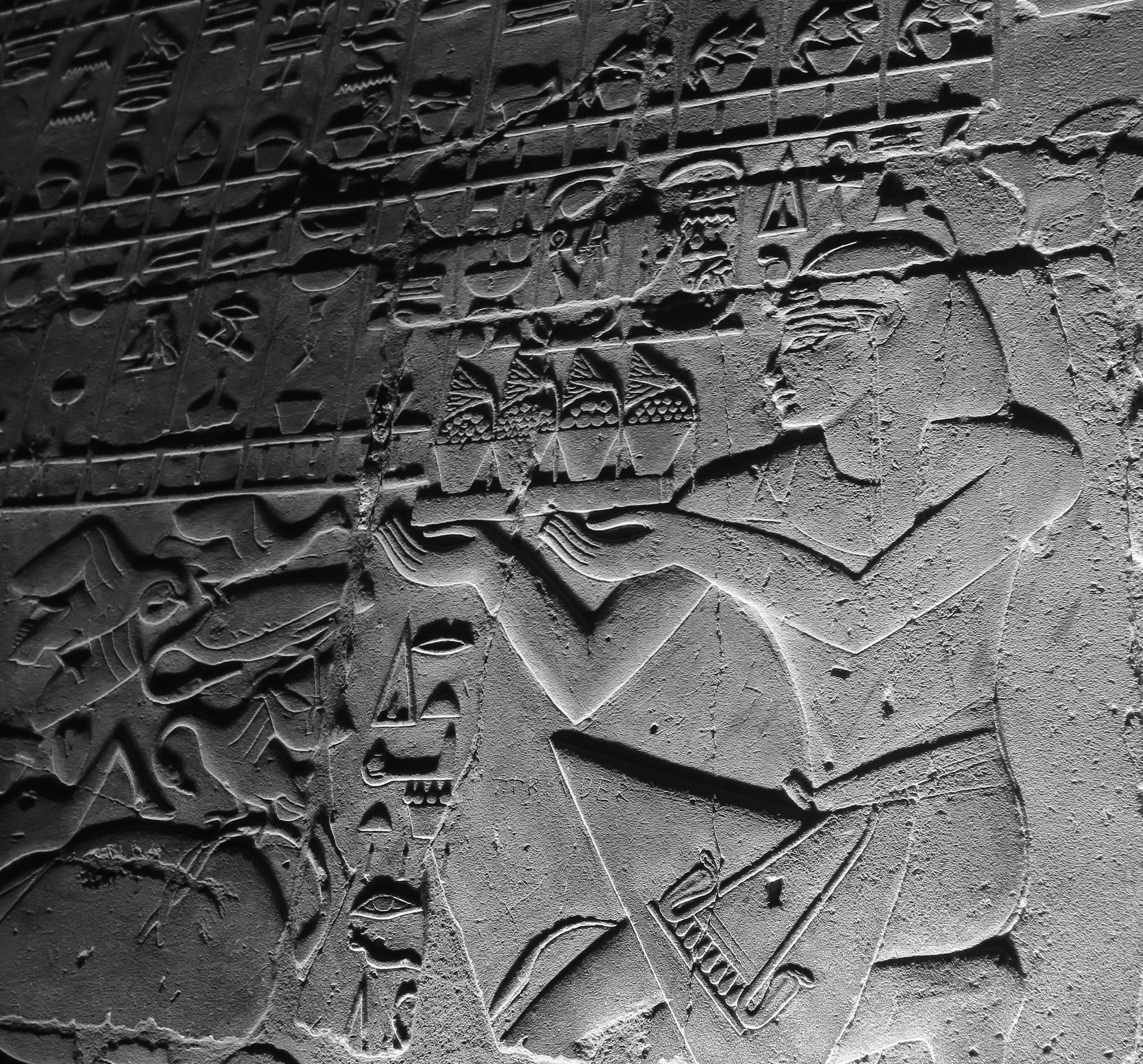
Overt sexual imagery is very rare in Egyptian art, but this is one of the exceptions. The guy with the giant erection is the god Amun who, at the time the Temple of Luxor was being built had been elevated to the station of chief god of Egypt, a forerunner of Zeus and Jupiter. Often called Amun-Ra or when I was a kid, just Ra, he was often depicted as a ram and thus the association with male sexuality and its real purpose, fertility. Everything in ancient Egypt, whether it be the annual flooding of the Nile or the spring birthing of sheep, goats and cows ultimately came down to fertility and if you could deliver that, you deserved to be king of all gods.
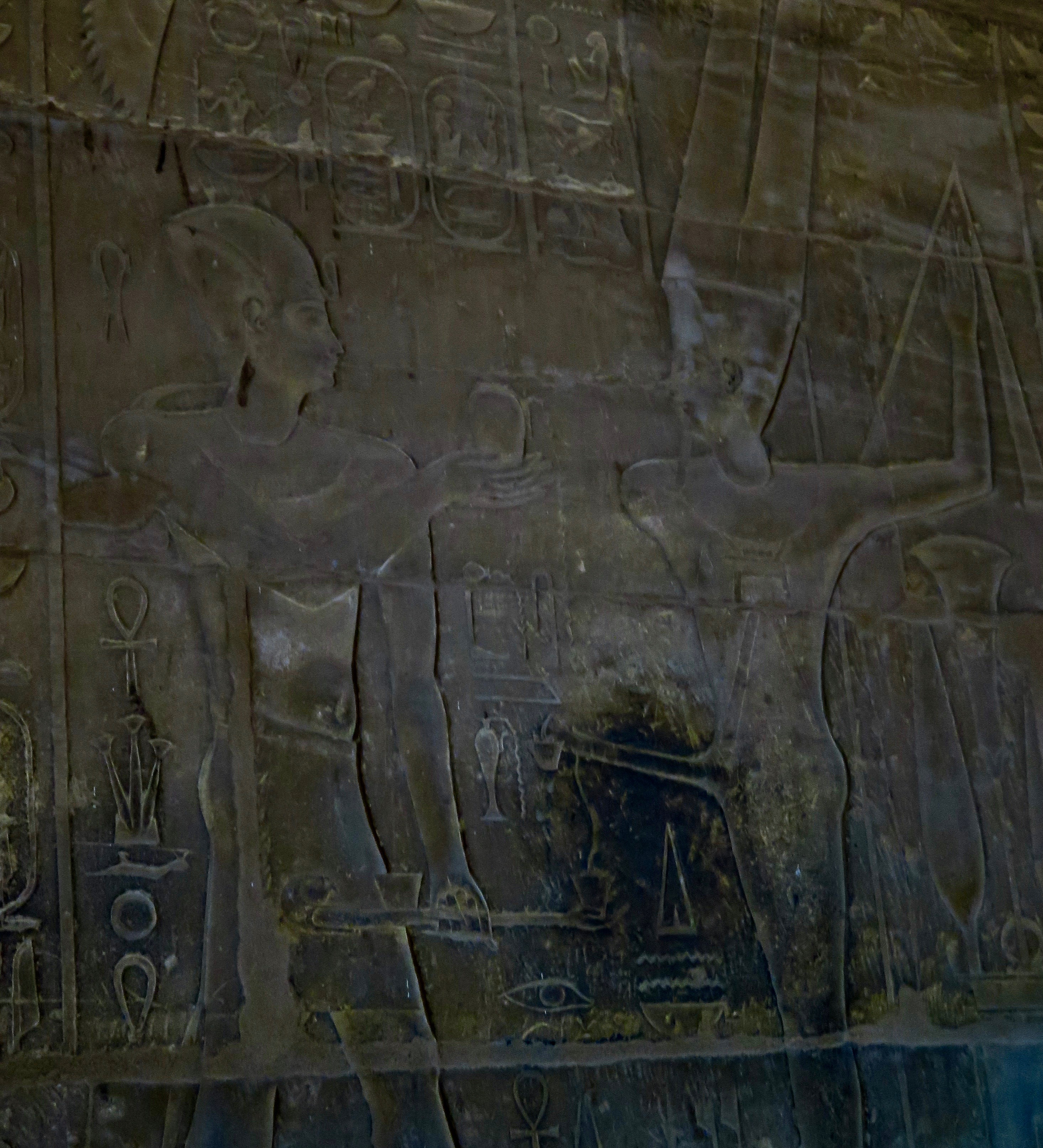
I took many pictures of Ramses II throughout Egypt, but this is my favourite – he has a confident half-smile that seems to intimate that he knows just how great he is and how little anything else in the world matters.
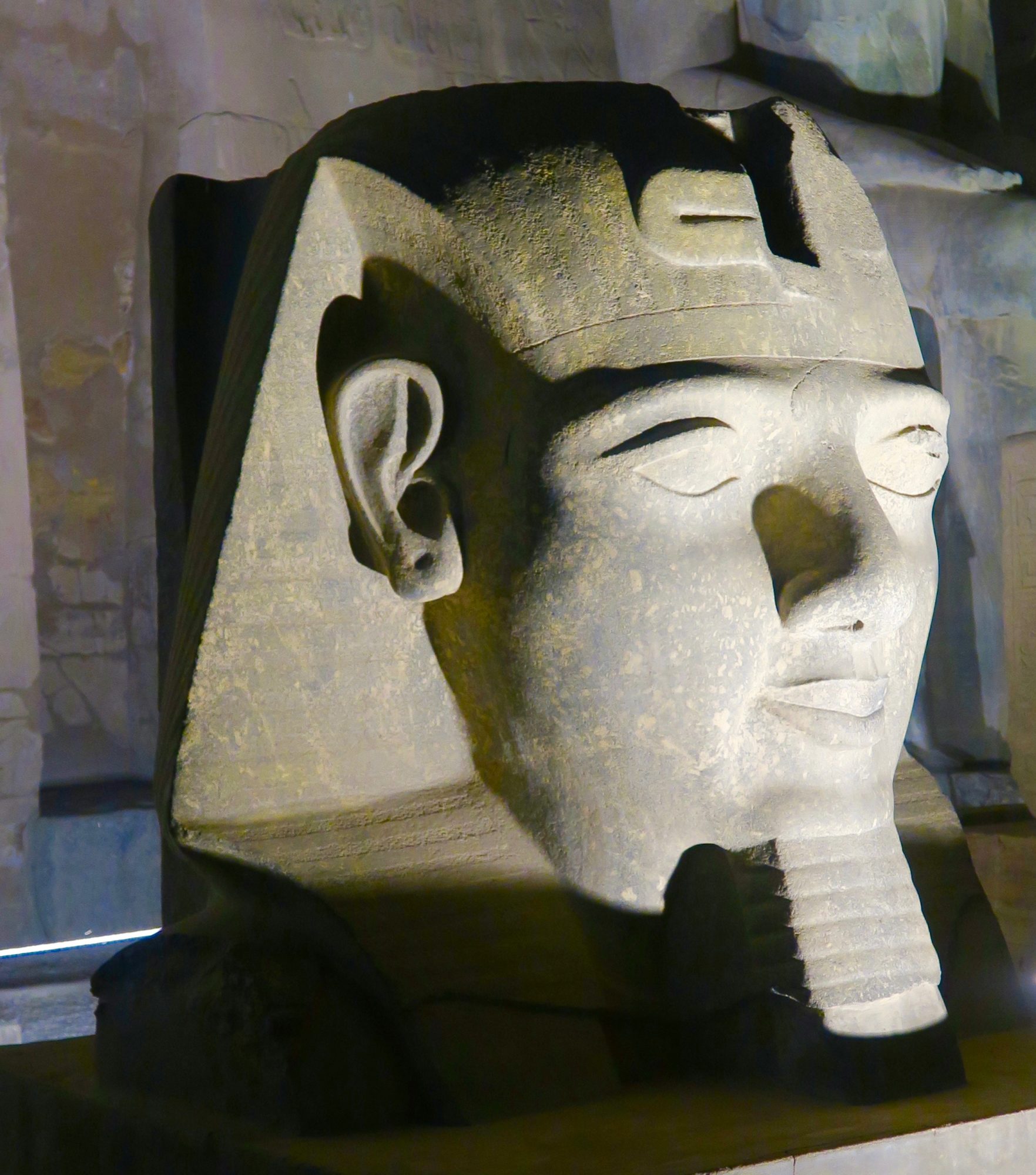
There is an ancient mosque built inside the Temple of Luxor which is interesting only for the fact that when it was built the sand had covered the ancient temple to a level twenty feet higher than today. From this picture you can see what was the original entrance now stranded well above street level after the sand was removed to reveal the remains of the original temple.
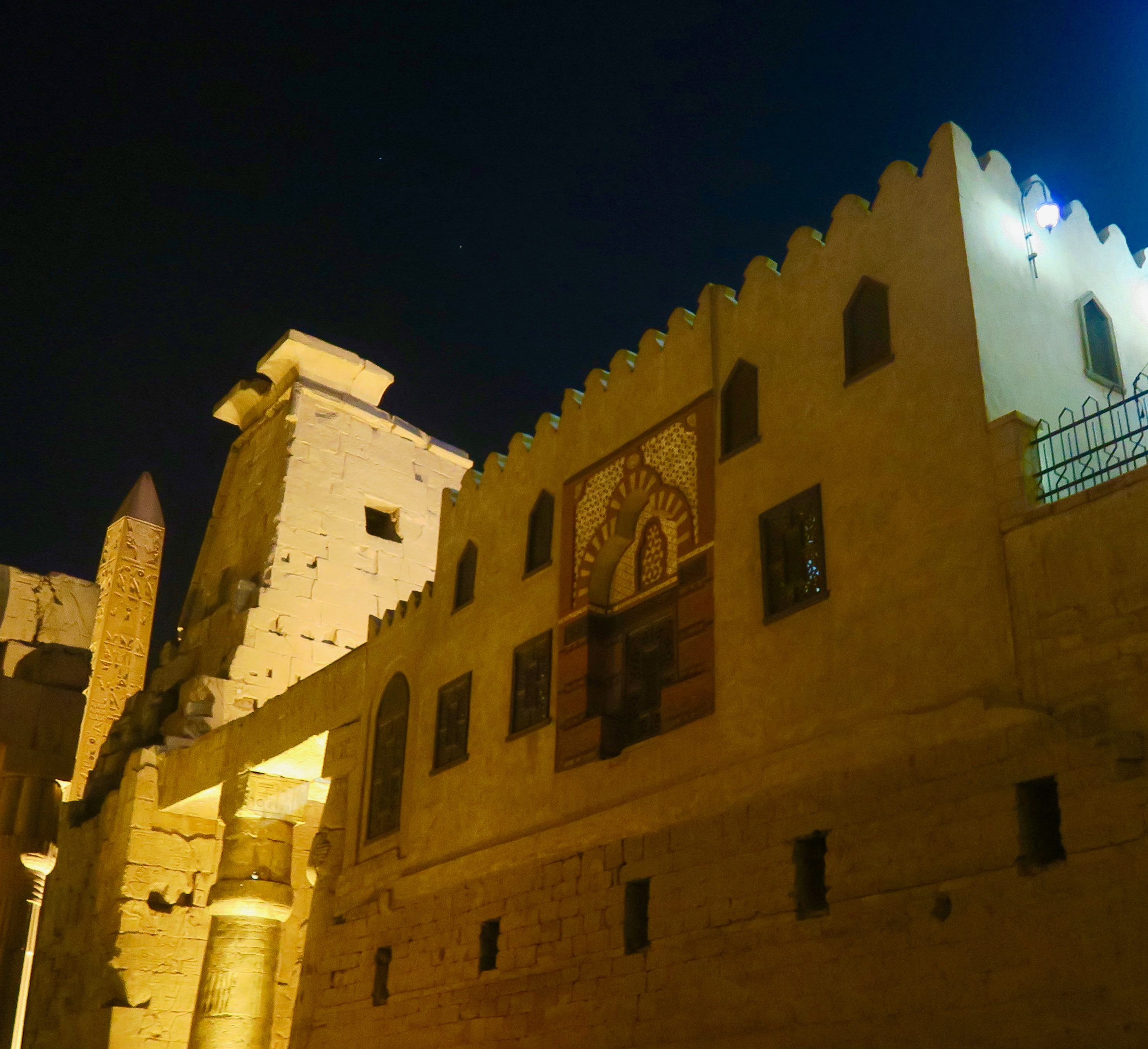
That concludes my visit to the wonderful Temple of Luxor. On my next posts I’ll visit the Temple of Karnak and the underrated Luxor Museum. I hope you’ll join me. In the meantime, here is a link to the Egypt photo gallery with photos from all the Egypt posts.

